The content of the article
Women's heels require special attention not only in summer, but also in winter. Even if you are a happy owner of slender legs, the lack of a pedicure will be noticeable to the naked eye. To bring heels in order, to rid them of yellowness and natoptyshey, you must have knowledge of basic care. Let us analyze important aspects in order, we give practical advice.
Why on the heels appear natoptysh
- The reason for the appearance of hardened fabrics is the sock of synthetic clothing. Artificial tights, socks, stockings do not allow the skin to breathe. As a result, the bacteria begin to grow, the heels disappear, a fungus appears. Further, the softened tissues harden at double speed, forming natoptysh. To exclude the cause, it is necessary to give preference to cotton items of clothing (as far as possible).
- The main reason for the appearance of rough places on the heels is the lack of a pedicure. It is important to understand that basic care involves the use of pumice and other abrasive compounds that remove dead cells. If you do not brush off the natoptysh, after a certain time, they will grow (become thicker) and crack. Defects will cause tremendous discomfort.
- Heel care involves regular cleansing and nourishment. As mentioned earlier, the skin of the feet needs peeling all year round, and not just in the summer. It does not mean that you need to do a pedicure daily. It is enough to carry out the procedure 2-3 times a month. To prevent the development of bacteria, wash your feet after wearing outdoor shoes (especially summer shoes).
- If we talk about the internal causes of hardened skin, these include various diseases. Diabetes, an acute form of gastritis, lack of vitamins in the spring and winter period, disorders of the thyroid activity - all this has a detrimental effect on the skin. If you add neglect of basic care, the consequences look bad. In such cases, it is necessary to undergo an examination and eradicate the cause.
- Poor quality shoes - another reason for the deterioration of the toe. Synthetic insoles and pile contribute to increased perspiration, legs begin to break. After removing the shoes, the skin is weathered, full-fledged natoptyshs are formed. If possible, choose quality products from "breathing" natural materials.
Heel baths
- Salt and ammonia. Boil 4.5 l. water in an enamel pot. After the bubbles appear, reduce the heat, add a handful of fine sea salt without flavors, pour in 30 ml. ammonia. Wait for the crystals to dissolve and cool down. Pour the contents into the basin, lower the heels into the bath, wait a quarter of an hour. After that, rub your feet with a pumice stone or a special brush for a pedicure. Wash off the remnants of warm water, apply foot cream, put on socks. Optionally, you can prepare a bath without the addition of ammonia, in this case, 4.5 liters. water will have about 180 grams. salt.
- Eucalyptus and olive oil. Prepare a herbal bath of chamomile, calendula, ginseng. Add 5 drops of eucalyptus ether per liter. infusion. Pour in 75 gr. olive oil, wait for the composition to cool.Dip in the foot bath, wait a quarter of an hour. After that, perform a pedicure, lubricate the heels with a cream, put on cotton socks.
- Chamomile color and milk. Boil 2 l. fat milk, remove the composition from the fire. Brew in a dairy product 45 gr. Chamomile inflorescences, leave infusion for 1 hour. After that, filter the mixture (you can skip this step), heat it on the stove to a comfortable state. Dip the heels in the broth, enjoy the bath 30-60 minutes.
- Lemon juice and soda. Pour into a saucepan 100 gr. baking soda, dilute it with three liters of water. Bring the mass to a boil, wait for the grains to dissolve. Pour 50 ml. lemon juice or grapefruit. Dip the heels in the solution, leave for a third of an hour. After the procedure, rinse the legs with a contrast shower. Upon completion of the procedure, cover the heels with a nourishing cream. Apart from the fact that the composition softens the skin, fights against sweating and fungus.
- Grapefruit and natural oil. Wash the citrus, remove the "ass", chop the fruit pieces. Send the grapefruit in a blender or meat grinder, chop into porridge. Pour the contents into a bowl, pour 3 liters. hot water, add any natural oil (sea buckthorn or olive oil will do). Make a bath for heels, soak legs consisting of a quarter of an hour.Next, make a peeling stop, dry your feet, lubricate the foot cream. Wear socks, do not remove them for at least 3 hours.
- Basil and manganese. Prepare a weak solution of potassium permanganate (pale crimson). In a separate container, pour boiling water over dried basil, let it stand for 1 hour. Connect the two solutions together, pour the contents into the basin. Dip your heels in the bath, spend the procedure about 25-30 minutes. At the end of the procedure, apply a nourishing cream.
Heel peeling
- Nuts and citrus peel. Grind in a mortar, blender or coffee grinder 70 gr. peanuts or almonds. Fry the crumbs in a dry frying pan until golden brown. In no case do not use walnuts, they paint the skin and make it yellow. Take the peel from two oranges or grapefruits, rub on a grater. Combine two ingredients, add a high-fat sour cream (you can substitute natural yogurt). In the end, you should have a pasty mixture. Rub her heels, rinse with warm water.
- Bran and coffee grounds. To prepare the scrub, you will need about 100 grams. waste coffee grounds.Pour 30 ml to it. vegetable oil, add so much rye bran to make a paste. Spread the product on the heels, affecting the foot entirely (optional), leave for 10 minutes. Next, spend the scrub, rinse.
- Burdock oil and sugar. If the heels are very rough and there are cracks on them, use an effective composition. Take 1 ripe tomato, remove the peel from it (first, dip the fruit in boiling water, after 1 minute, move it into ice water). Crush the vegetable in a puree in any convenient way, pour in 35 ml. burdock oil. Immediately add a handful of sugar to the grains did not have time to dissolve. Scrub lightly in circular motions, rinse off after 5-7 minutes.
- Honey and sour cream. Crush 2 handfuls of almonds into a crumb with small abrasive particles. Sprinkle 40 oz. candied honey, add fat sour cream (the amount is set after the fact). You should have a thick scrub. Massage your heels for 10 minutes, rinse. To enhance the effect, add 20 grams to the peeling. drinking soda.
- Apricot pits. To prepare the composition you need about 80 grams.dried apricot pits. Grind them into a crumb using a coffee grinder or blender, mix with 45 ml. vegetable oil. Dry the orange zest in the oven, grind to a powder. Mix the two mixtures together. If the scrub is thick, add more oil. Spread the product on the heels, wrap with cling film, wait half an hour. After that, peel and wash.
- Bran and Kiwi. Mix wheat, rye or flax bran with table salt (2: 1 ratio), pour in 20 ml. corn or olive oil. Remove peel from kiwi, turn pulp into puree, mix it with the previous mixture. Immediately scrub the heels, remove the agent with water after 10 minutes.
- Children's cream and oatmeal. Get medium-sized oatmeal, combine a handful of the composition with coffee grounds (equal proportions). Add this amount of baby cream to get a full purchase scrub. Rub it all over the skin of the feet, leave it for 20 minutes, and only then begin peeling. The composition does not need to be washed off, you can remove excess paper towels.
How to clean heels of yellowness
In most cases, even after steaming and exfoliating, the heel skin is still yellow. To get rid of defects of this kind, use a whitening bath.
Method number 1. Hydrogen peroxide and salt
- Pour into a pelvis 80 gr. fine sea salt, which does not contain flavors and dyes. Add 7 ml. any ether, pour 30-50 ml. olive oil. After that, pour 65 ml. solution of hydrogen peroxide concentration of 3-6%, mix the contents of the container. If you wish, add shampoo or liquid soap, whisk the composition with your hand.
- If the bath is hot, cool the solution to a comfortable temperature. Send to the foot, wait a third of an hour. Every 5 minutes, evaluate the result: if the yellowness comes off faster, reduce the duration of the procedure.
- Start a pedicure. Alternately treat the heels with a cosmetic “sandpaper” or pumice stone, remove the coarse grains with a pedicure blade. Use the special buff that polishes the microcracks on the heels.
- When the yellowness finally disappears, rinse the feet with clean water. The owners of sensitive skin is recommended to apply a special foot cream,then wrap your feet with cling film (or put on shoe covers). Keep the legs in a compress for at least 2 hours.
Method number 2. Milk
- Dissolve in 2 liters. boiling water chips baby soap (you can use a liquid composition). Beat the contents into the foam, leave for 10 minutes until partially cooled.
- At this time, boil 2.5 liters. milk, pour the product to the first composition. When the liquid reaches an acceptable temperature, lower the legs into it.
- The duration of exposure depends on individual preferences, but it must be at least half an hour. Your heels should completely soften so that you can perform a pedicure.
- When the skin softens, rub the grates with an abrasive brush or pumice stone, scrub if desired. Wash your feet thoroughly, proceed to further manipulations.
- Fold the gauze fabric in 5 layers, soak it in hydrogen peroxide and attach to the heels. Fix the compress with cling film, wait for 20 minutes.
- During this period, the skin will be bleached, you will only have to rinse your feet with warm water and apply a cream. To maintain softness for a long time, after the procedure, wear cotton socks.
Basic heel care includes not only steaming, but also exfoliation of dead skin cells. For these purposes, experienced cosmetologists have developed home scrubs and baths.Hydrogen peroxide and sea salt will help you to rid the heels of yellowness.
Video: how to care for feet

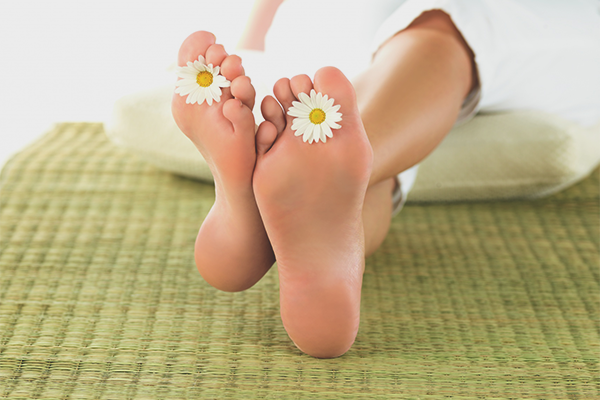
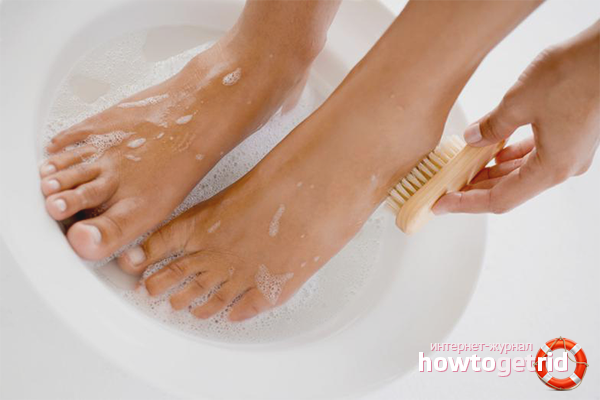
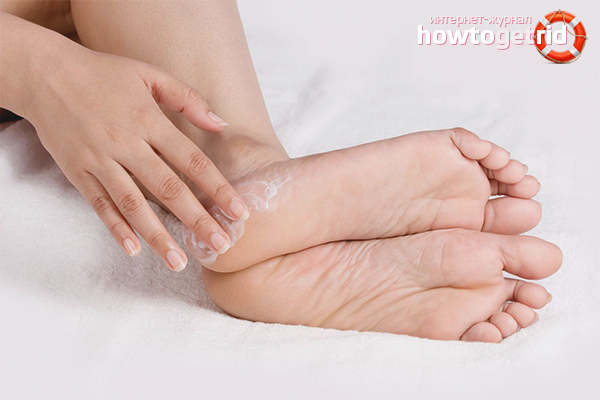
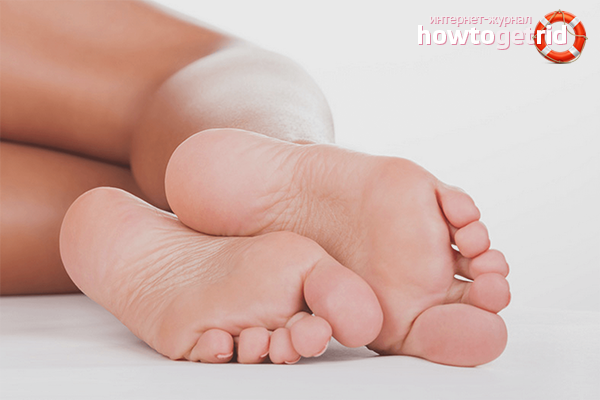

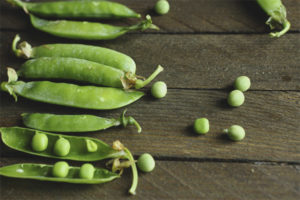

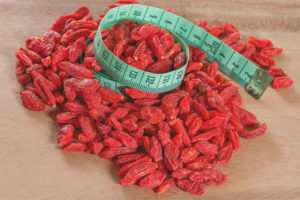
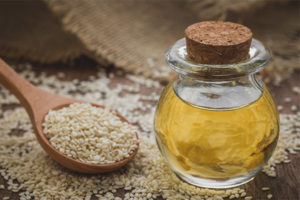

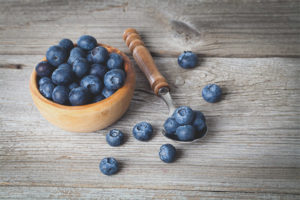
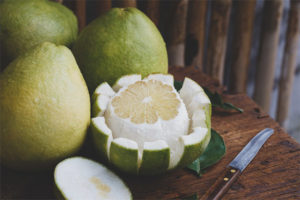
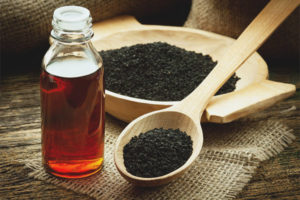
To send